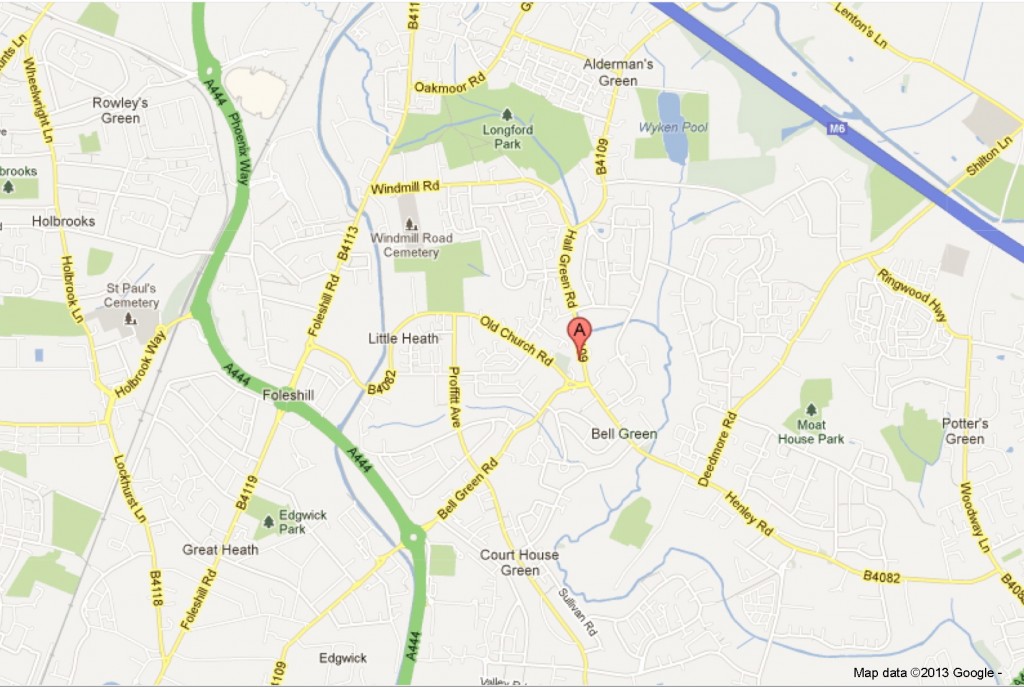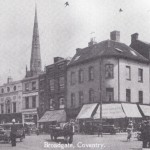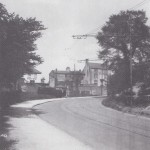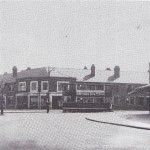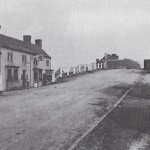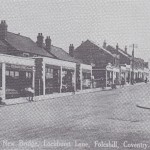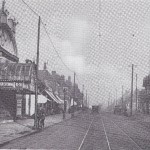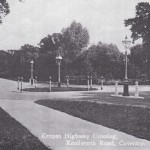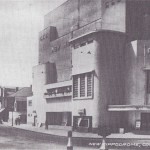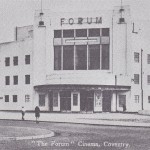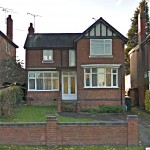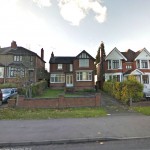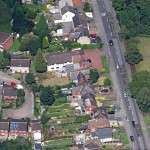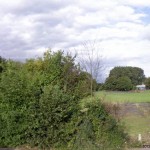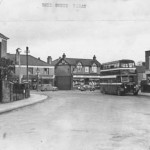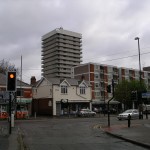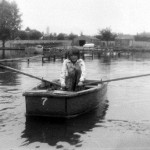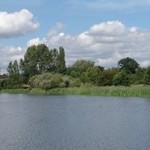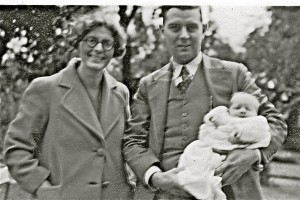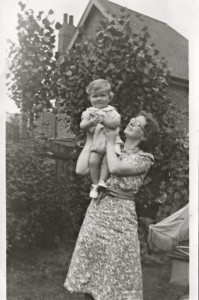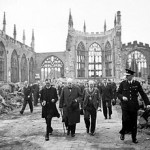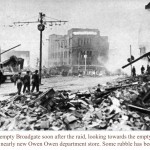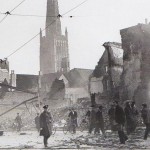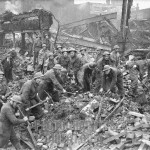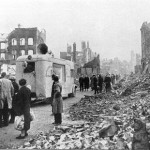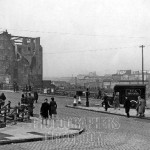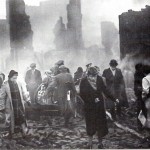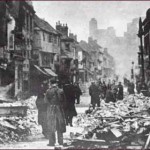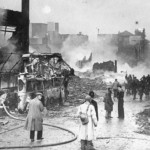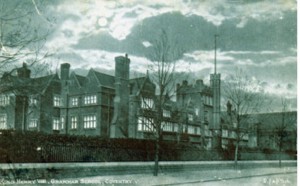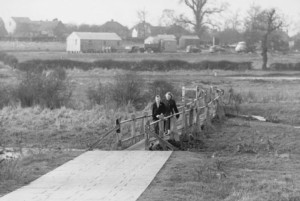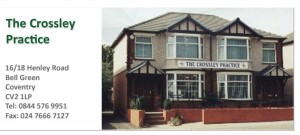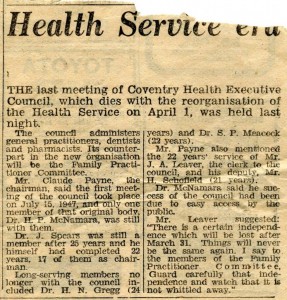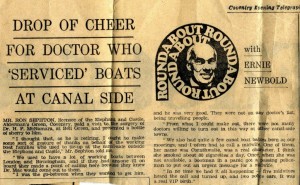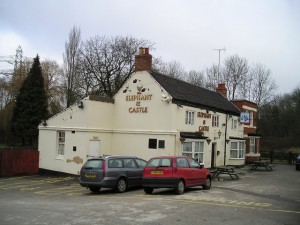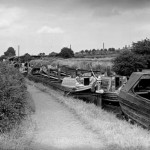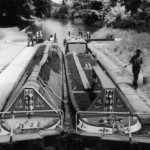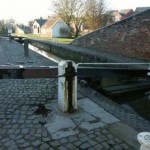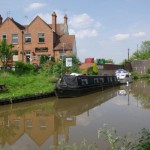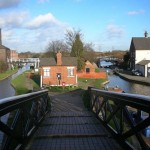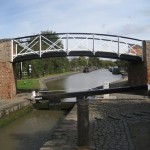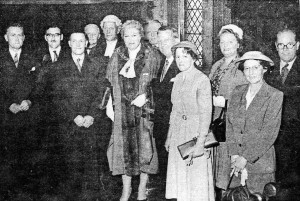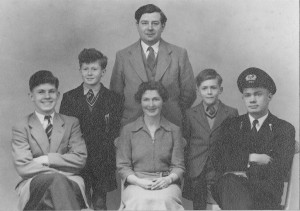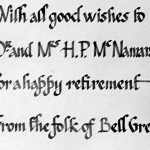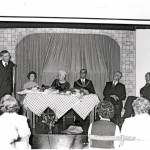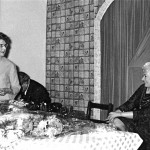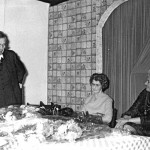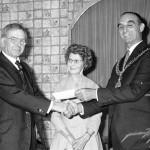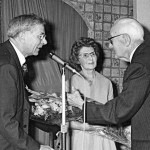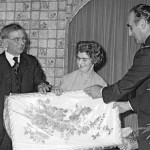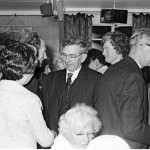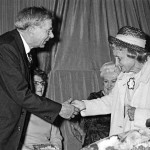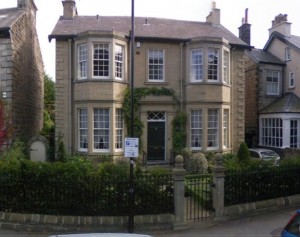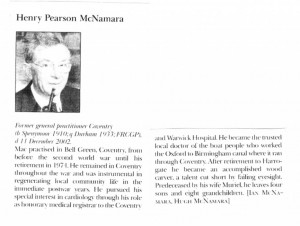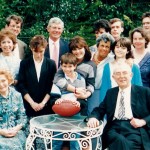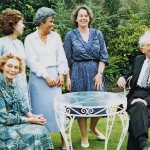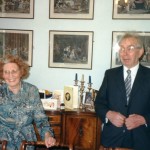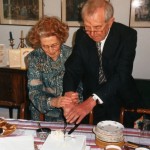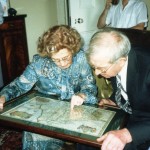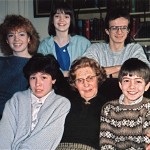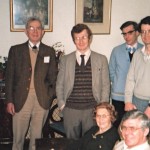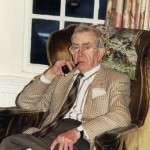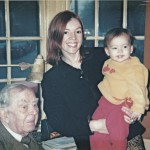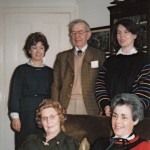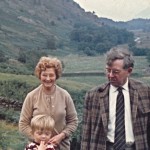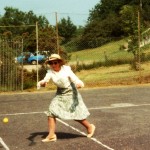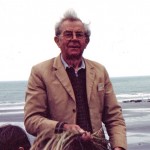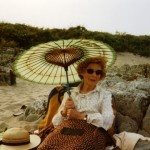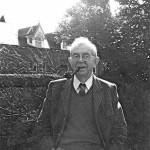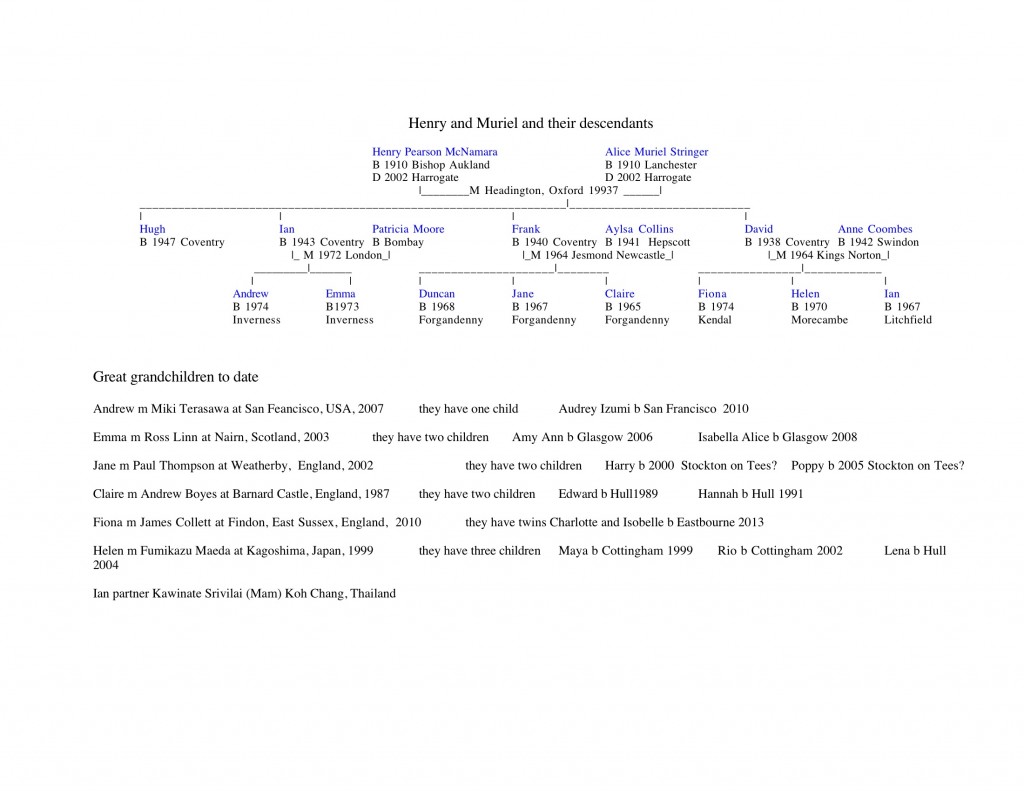Married Life
After their honeymoon in Switzerland Henry and Muriel moved to 51 Hall Green Road, Bell Green, Coventry, see the map and pictures below, the house and locality have evidently fallen on harder times today. Up until the 1960s Hall Green Road was a semi-rural area on the outskirts of Coventry with housing on one side and open country and farms on the other. For pictures, history, and accounts of Coventry there is a number of web sites, for example see here and here. The couple passed all their working lives at this home.
Coventry 1925 – 1939
The Coventry that would have been familiar to Henry and Muriel when they arrived before the war. Photographs taken from The Covenrty We Have Lost, Albert Smith & David Fry, 1991.
- Broadgate 1929
- Bell Green Road, 1939
- ‘Top of Bell Green Road, tram terminus, 1939
- Tusses Bridge, Hawkesbury Lane, 1925
- Lockhurst Lane, Foleshill, 1931
- Foleshill Road, 1925
- Kenpas Highway, 1936
- New Hippodrome c1938
- Forum Cinema, 1935
51 Hall Green Road 2012
- 51 Hall Green Rd 2012
- And the neighbours
- 51 from the air, centre of view
- ‘Over the road’ from 51. This was all open farm land after the war.
It was here that Henry became an established general practitioner and the couple started their family and human life as we know it began. The first surgery was in a terrace house at Bell Green. On the photograph to the far left below it was tucked around to the left near the lamp post in the background.
The Changing Face of Coventry
- Bell Green Junction with Old Church Road.
- Hall Green Road
- Wyken Slough, undated
- Wyken Slough now a nature reserve
When he set himself up in General Practice Henry ‘nailed his brass plate to his surgery door’ as the phrase went at the time, and waited for business which was soon forthcoming. His first surgery was in a modest terraced house which backed onto the local sausage skin works – as was sometimes indicated by the smell. When he started out there was no free medical care and the task of a medical practitioner was dramatically different from what it is today. For example, every Monday morning he went to his surgery and filled two apothecary’s flasks with soluble aspirin and put red die in one and green in the other. Often he could make a correct diagnosis but he knew that the patient could not afford to pay for the treatment. So he sold them the red medicine for threepence and if that did not work then the green. Also he bought in bulk large quantities of aspirin tablets, colored white, blue, yellow and pink, which he kept in large jars under his examination couch. He dispensed them for a few modest pence but still made a hefty profit on the turnover, as he bought them so cheaply. Henry was always amused that even though the tablets were identical many patients would swear by one color tablet being far more effective than the others. Also in his early years in Coventry he performed tonsil and adenoid operations on the wooden surgery table, which was scrubbed for the operation, with help from his unqualified surgery assistant administering the anaesthetic ether.
When Henry set up in practice the couple rented the Hall Green house on what they assumed would be a temporary basis. It was in poor condition without, for instance, electricity. As a small child I can remember one celebrated occasion when Mum summoned a salesman to demonstrate a vacuum cleaner in the house and there was some fuss because he was rather peeved that he could not find the electric plug! It was their intention to buy a more suitable property as soon as they could. However, the Second World War intervened during and after which it was extremely difficult to buy houses and new houses were not being built. Rebuilding war damaged property was the priority in Coventry. Hence after the war they acquired 51 Hall Green Road and eventually the house was extended and modernised, including the installation of electricity which was completed as soon as German prisoners of war had laid the electricity mains along the road. This became the family home and Henry and Muriel remained there until their retirement.
Despite the war and the conditions they were living in throughout the blitz they decided to start a family. During the Coventry blitz in about 1940 – 42 the first two children, David and Frank, were evacuated to the grandparents’ house in Staunton Road, Oxford with their mother. There are many illustrated histories of the blitz, for a good example for Coventry see here. Henry was keen to sign up and join the services and fight but the authorities would not allow him to do so because he was a doctor and it was decided that his services were required in war-torn Coventry.
The war years and afterwards were tough in Coventry for instance the food ration each week for a British adult was four ounces of lard or butter, twelve ounces of sugar, four ounces of bacon, two eggs, six ounces of meat, two ounces of tea and unlimited vegetables.
During the war Muriel decided to write a diary and on the 11th November 1943 she wrote:
Perhaps, I should keep a diary, try to chronicle the daily copings of family life in such a city. … Yet one day, my family may read the record and wonder “was it really like that?”
The extracts below give a flavor of life in Coventry at the time.
It was pleasant to be in the butcher’s nice whole house. But I take comfort, that in a blitzed city, a roof is almost a luxury. Our rag windows, flapping and blustering during storms, letting in chill air through odd holes.
Then my astonished eyes spotted some cups in a near by shop. Jam packed we stood, to be allowed 3 cups and saucers each, such treasure. We almost grabbed our share to wrap in our self carried paper. Oh yes, we always take wrapping paper with us (which is very scarce) just in case there is aught to buy.
We queuing females were able to purchase SULTANAS, our avid joy.
Now, a moonlight night, & H(enry) has gone to the First Aid Post. Let it be a quiet night.
Three nights after F(rank) was born, the siren wailed, I was trussed up in a sleeping bag and aided by two kindly neighbors was carried below ground (to the garden Anderson shelter).
Most nights became a hectic rush to prepare for our mole-life. Two children packed up like parcels, supper on tray, sleeping bags, gas masks, rug, candles etc.
When our (gas) lights were damaged and water came through the gas rings (owing to a land mine …) the children and I protestingly went to Oxford for a few weeks. We did not return for many months.
After the November blitz, my weary husband had gone to his surgery, and to his amazement, saw an elderly lady sitting patiently in the waiting room amidst the broken glass … she asked for some medicine for her cough.
D(avid) & F(rank) in shelter today, searching for hedgehogs … Herbert and Clarence were duly kept in a large hay lined box … D & F sat for hours feeding them worms. Alas our kindness killed them.
Went in search of a cot pillow for F, his present one too soft for safely. No pillow to be obtained except by buying a new pram. Well it is only fair that new babies have priority.
A day of nothing much … I have been given a fruit cake. On the obverse side there are one or two cases of diphtheria, am thankful boys are immunised.
We have shed … so many things we considered life’s necessities, bacon, tea, butter, eggs, sweets, fruit, coal, petrol, clothes etc … points, and ration books and coupons are now second nature.
The Coventry Blitz 1940
- Churchill at Coventry Cathedral
- High Street
- Gosford Street
- Broadgate, centre of Coventry, after the November 1940 air raids.
During the war Dad is reputed to have given his wife a capsule (presumably cyanide) to be taken if the Germans invaded and she became at risk because of their presumed evil ways. True or not we do not know. A couple of other diary entries illustrate how different life was shortly after the war. In one entry Mum was agonising about whether it would be appropriate to take her infant children to see a film because she was concerned that it may have a harmful effect upon them. The film was Bambi. In another, written just before Christmas, she was grumbling about the difficulty of keeping up the pretense to her children that Father Christmas delivers the presents after the fourth postal delivery of the day – in Coventry where the centre of the city had been obliterated.
As a medical family the McNamaras were more fortunate than many people. For instance after the war when severe food rationing continued Dad purchased a pig which was reared on the farm of one of his patients. It was butchered and prepared for eating and preserving in the kitchen at Hall Green Road. One of the advantages of being a medical family was that Henry could eventually buy a new car, since it was considered essential for his work and was not subject to the severe petrol rationing then in place.
Henry continued to develop what became a large medical practice and he was one of the first doctors to join the newly formed National Health Service. Eventually he had to take on a couple of additional partners. During the 1960s when GP contracts were first introduced the partners were able to acquire a semidetached house over the road from the first surgery and develop a modern purpose built practice building. After Dad retired the remaining partners bought the other semi detached half of the property. This has now developed into what is now the Crossley Practice.
Henry had a particular interest in Cardiology and eventually he worked for many years, for half a day a week, as an honorary medical registrar in cardiology at the Coventry and Warwickshire Hospital in Stoney Stanton Road. An unusual appointment in those days. He must have been one of the first GPs to acquire a portable ECG machine which he relished and on occasion during student vacations he would entrust Ian, then a medical student, to use it with patients with heart problems. In 1944 The Red Cross appointed Henry as the Society Medical Officer for Warwickshire.
Throughout his working life Henry took a keen interest in the administration of the Health Service, for instance for many years he also served on the Coventry Hospital Management Committee and the Birmingham Regional Hospital Board and a number of other committees. For much of his professional life he was secretary of the local BMA. See the press reports below.
While living in Coventry after the war and when the children were younger Henry had a certain attachment to life on water. He was one of the few doctors who would visit the itinerant families who worked the old coal barges and he developed a reputation among the bargees with his ability to deliver babies in the close confines of the narrowboat cabin. He also became quite an authority on the life and cultue of the bargees and the canal system. His committment to the barge people was very much appreciated as the press cutting below testifies.The Elephant and Castle pub mentioned in the article can be seen on the photograph of Tusses Bridge in the photo gallery at the top of the page. The canal runs underneath the bridge and barges used to moor there, as did Henry’s boat when it broke down, see below.
After the war Henry purchased a small cabin cruiser powered by a particularly unreliable outboard motor. The children spent / endured many happy hours on the local canals rowing and towing the thing when the engine broke down, yet again. The boat was moored at Grindal’s farm near Bulkington and frequently travelled to Sutton Stop, Longford and Hawkesbury Junction, Aldermans Green.
Canal Life
- Narrow Boats on Coventry Canal, nr Tamworth. c1955
- Old Narrow boats laden with coal
- Sutton Stop, Longford
- Coventry Canal, Bulkington Bridge
- Hawkesbury Junction, Aldermans Green
- Sutton Stop
On one occasion during in his forties Dad was examining a specimen under a microscope and he realised that he was blind in one eye. He probably had Retinal Vein Thrombosis for which there is no cure. He did not do anything about it or tell anyone. He informed me that he had gone blind in one eye in his forties when he was 85. An indication of his stoicism which could be taken to extremes. His dentist once told me that Dad was the only patient who frightened him when he refused an anaesthetic for root canal treatment, a procedure which involves operating on a live nerve. He later confessed that this had probably not been his best idea. He also became diabetic in his fifties and was amused by his failure to diagnose his own condition for some time.
After the war Muriel became a columnist on ‘House Hold/Domestic Tips’ for Good House Keeping magazine. She also wrote a novel about miners in the North East that was never published. The achievement that gave her most satisfaction and recognition was her appointment as a JP in June 1957 She was considered to be exceptionally competent in this role, especially as a juvenile magistrate.
During the Coventry years everyone used to look forward to those delightful occasions when we gathered for a family photograph (this can be removed upon payment of an appropriate fee).
Back to Harrogate
After a notable send of from Henry’s Bell Green patients in 1973 Henry and Muriel returned to their Northern roots and retired to 11 Queen Parade, Harrogate, where they remained for the rest of their lives.
Bell Green Farewell
During retirement Henry developed considerable skill as a woodcarver and enjoyed visiting salesrooms and acquired a number of paintings and object which gave him much satisfaction.
The striking contrast between the houses and neighborhoods of their childhood years and the home of their retirement in Harrogate illustrates the remarkable transformations which took place during their lives.
Henry and Muriel died at Harrogate in 2002 within a few months of each other. Henry’s obituary notice from the British Medical Journal is below.
Life in Retirement
- Golden Wedding, group photograph
- With daughters in law, Golden Wedding
- Henry and Muriel, Golden Wedding 1987
- Henry & Muriel cutting the cake, Golden Wedding, Harrogate, 1987
- Viewing map of County Durham
- Muriel with Helen, Fiona. Ian, Emma, Andrew
- Henry and Muriel with their sons, Harrogate, 198?
- Henry, Harrogate
- Henry with Helen and great granddaughter Maya
- Henry and Muriel with daughters in law Patsy, Anne. Ailsa
- Henry and Muriel, with Ian, Lake District
- Muriel playing tennis Inverness 1997
- Henry holiday in Wales, c 1982
- Muriel, holiday Inverness?
- Henry, Inverness, c1987
Their family continues with their children, grandchildren and great grandchildren. Over 250 years span the first record of an identifiable ancestor and the youngest generation today.

